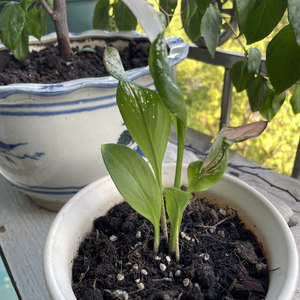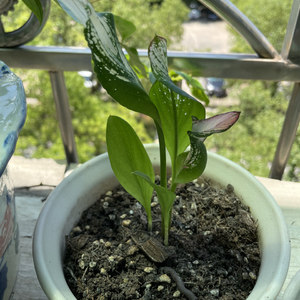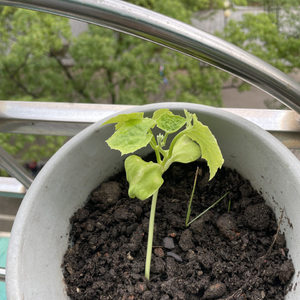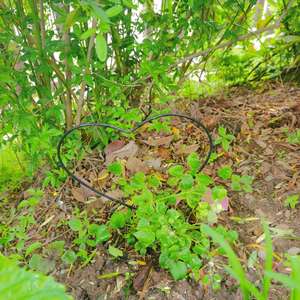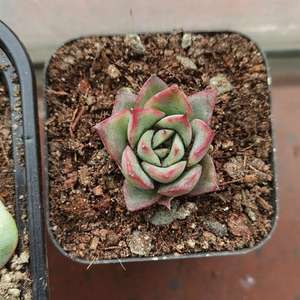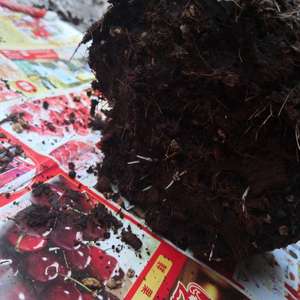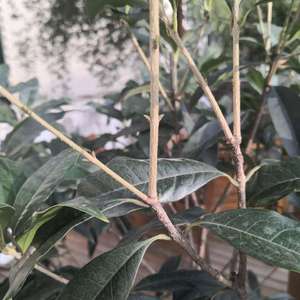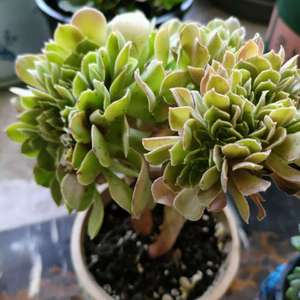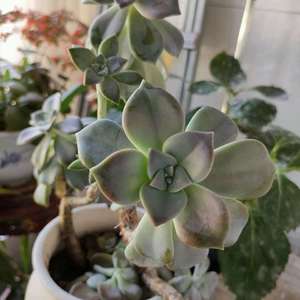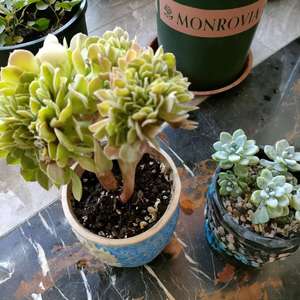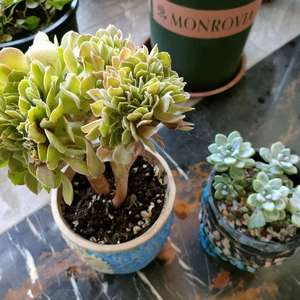文章
Miss Chen
2021年11月26日

The bridal wreath spirea (Spirae aprunifolia) is a medium-sized deciduous shrub with an upright arching habit, featuring thick sprays of white double flowers that create a focal point in the landscape. Fully hardy in USDA hardiness zones 5-9, this is an easy-to-grow shrub that, once established, requires little care.
The Spiraea genus is found within the Rosaceae family of plants, and it bears some similarity to rose bushes, especially the shape of the leaves and the spiny stems. The species name, prunifolia, indicates that the leaves are similar to those of Prunus, the group that contains many of the familiar stone fruits such as cherries, plums, and peaches.
In spring blooming season, bridal wreath spireas create a cascading waterfall of white, with clusters of small white flowers that bloom all the way down the arching branches. Each leaf is 1- to 3-inches long with an ovate or elliptical shape. The spring flower display is followed by another show in the fall when the leaves turn to hues of red, orange, and yellow.
Spirea is a fast-growing shrub, and within a single growing season, it usually achieves full size. Like most shrubs, bridal wreath spirea is best planted early in the growing season, which will allow the shrub's root system plenty of time to become established before winter. If you must plant in the fall (this sometimes is when nurseries are discounting available stock), try to do it with enough time so the shrub's roots can settle in and begin growing before winter weather sets in.

Botanical Name Spiraea prunifolia
Common Name Spirea, bridal wreath, bridal veil spirea
Plant Type Deciduous shrub
Mature Size 4-8 ft. tall and wide
Sun Exposure Full sun
Soil Type Any well-draining soil
Soil pH 6.0-7.0 (slightly acidic to neutral)
Bloom Time Early spring
Flower Color White
Hardiness Zones 5-9, (USDA)
Native Area China, Korea, and Taiwan
Bridal Wreath Spirea Care
This shrub is very easy to grow in any average soil in a full sun location. It will tolerate some shade, and once established, it has a decent tolerance for occasional drought. Like most shrubs, it should be planted in a carefully prepared hole, at the same depth it was growing in its nursery pot. If planting in a row or mass, space the plant at least 3-feet apart, or 4- to 6-feet apart for a looser mass.
Bridal wreath spirea makes a great specimen plant, or it can be planted as a hedge or in masses as a screening plant. It also works well in foundation plantings. It is excellent when planted in the sunny margins abutting woodland areas, similar to the way azaleas are often used.
The bridal wreath spirea attracts butterflies, but its prickly stems repel grazing by deer. Make sure to plant this shrub where it will not scratch human passers-by—unless you are planting it to discourage intruders.
There are no serious pest or disease problems for the bridal wreath spirea, but they can be susceptible to many of the diseases and insects that attack other members of the rose family. This includes leaf spot, fire blight, powdery mildew, root rot, aphids, leaf roller, and scale.
Some varieties of spirea can escape gardens and become invasive in parts of the U.S., so before planting, check with your local extension office agent.1
Learn About Gold Mound Spirea
Light
This shrub will do best in a spot in your garden that receives full sun; it will tolerate part shade, though with slightly reduced flowering. When planting young bridal wreath spirea shrubs, make sure to provide plenty of room between them: They will grow and can block each other's light if planted too close together.
Soil
This plant is not picky about the soil it's planted in, and can thrive in clay, loam, and even acidic soils. Its biggest need is soil that's well-draining, so the roots never sit in water.
Water
Bridal wreath spirea prefers to grow in well-drained moist soil, though it is able to withstand some periods of drought. Water the plants once a week during the summer whenever rainfall is less than 1 inch. Keep the plants well-watered as they are becoming established.
Temperature and Humidity
This plant is quite hardy, surviving both cold winter and hot summer temperatures in its defined range. It thrives in any climate conditions within its hardiness zones (5-9).
Fertilizer
Every spring, add a 2-inch layer of compost over the soil under the shrub. This is usually sufficient to feed the plant, and it will also help to retain moisture and prevent weeds.

Bridal Wreath Spirea Varieties
‘Fire Light’ has pink flowers that show in summer, and fiery red fall color.
‘Anthony Waterer’ boasts carmine-red flowers and purple fall foliage.
‘Tor’ features tiny white flowers and dark green oval leaves that turn orange, red, and purple in fall.
‘Snowmound’ offers white flowers, attractive arching stems, and dark, blue-green foliage.
Pruning
This plant tends to spread through suckering, so ground suckers will need to be trimmed off if you want to keep the shrubs confined.
If desired, the shrubs can be pruned for shape or size immediately after the spring flowering period. Always use a clean, sharp gardening shear. A good pruning routine is to remove all dead wood, as well as some of the oldest stems all the way to ground level. This will open up the center of the shrub to sunlight, which will reinvigorate it. Tips of branches can also be trimmed to control the size of the shrub.
Propagating Bridal Wreath Spirea
The best way to propagate bridal wreath spirea shrubs is by rooting softwood cuttings. To do so, cut segments of flexible stem tips 6- to 8-inches long. Remove the bottom leaves from these trimmed segments. Dip the cut end into powdered rooting hormone.
Fill a 6-inch pot with moist potting mix, then plant four or five prepared stems around the inner edge of the pot, embedding the exposed nodes into the potting mix. Cover the pot with a large plastic bag and seal it. Place the pot in a dappled shade location and allow the cuttings to root over the next few weeks. Check periodically to make sure the potting mix remains moist.
After about four weeks, you should see new, green growth on the stems, indicating that roots are forming. At this point, repot the cuttings into their own individual containers, then tuck the pots into a sheltered location and allow them to continue growing until they go dormant in winter. The next spring, transplant the rooted cuttings into the garden.
The Spiraea genus is found within the Rosaceae family of plants, and it bears some similarity to rose bushes, especially the shape of the leaves and the spiny stems. The species name, prunifolia, indicates that the leaves are similar to those of Prunus, the group that contains many of the familiar stone fruits such as cherries, plums, and peaches.
In spring blooming season, bridal wreath spireas create a cascading waterfall of white, with clusters of small white flowers that bloom all the way down the arching branches. Each leaf is 1- to 3-inches long with an ovate or elliptical shape. The spring flower display is followed by another show in the fall when the leaves turn to hues of red, orange, and yellow.
Spirea is a fast-growing shrub, and within a single growing season, it usually achieves full size. Like most shrubs, bridal wreath spirea is best planted early in the growing season, which will allow the shrub's root system plenty of time to become established before winter. If you must plant in the fall (this sometimes is when nurseries are discounting available stock), try to do it with enough time so the shrub's roots can settle in and begin growing before winter weather sets in.

Botanical Name Spiraea prunifolia
Common Name Spirea, bridal wreath, bridal veil spirea
Plant Type Deciduous shrub
Mature Size 4-8 ft. tall and wide
Sun Exposure Full sun
Soil Type Any well-draining soil
Soil pH 6.0-7.0 (slightly acidic to neutral)
Bloom Time Early spring
Flower Color White
Hardiness Zones 5-9, (USDA)
Native Area China, Korea, and Taiwan
Bridal Wreath Spirea Care
This shrub is very easy to grow in any average soil in a full sun location. It will tolerate some shade, and once established, it has a decent tolerance for occasional drought. Like most shrubs, it should be planted in a carefully prepared hole, at the same depth it was growing in its nursery pot. If planting in a row or mass, space the plant at least 3-feet apart, or 4- to 6-feet apart for a looser mass.
Bridal wreath spirea makes a great specimen plant, or it can be planted as a hedge or in masses as a screening plant. It also works well in foundation plantings. It is excellent when planted in the sunny margins abutting woodland areas, similar to the way azaleas are often used.
The bridal wreath spirea attracts butterflies, but its prickly stems repel grazing by deer. Make sure to plant this shrub where it will not scratch human passers-by—unless you are planting it to discourage intruders.
There are no serious pest or disease problems for the bridal wreath spirea, but they can be susceptible to many of the diseases and insects that attack other members of the rose family. This includes leaf spot, fire blight, powdery mildew, root rot, aphids, leaf roller, and scale.
Some varieties of spirea can escape gardens and become invasive in parts of the U.S., so before planting, check with your local extension office agent.1
Learn About Gold Mound Spirea
Light
This shrub will do best in a spot in your garden that receives full sun; it will tolerate part shade, though with slightly reduced flowering. When planting young bridal wreath spirea shrubs, make sure to provide plenty of room between them: They will grow and can block each other's light if planted too close together.
Soil
This plant is not picky about the soil it's planted in, and can thrive in clay, loam, and even acidic soils. Its biggest need is soil that's well-draining, so the roots never sit in water.
Water
Bridal wreath spirea prefers to grow in well-drained moist soil, though it is able to withstand some periods of drought. Water the plants once a week during the summer whenever rainfall is less than 1 inch. Keep the plants well-watered as they are becoming established.
Temperature and Humidity
This plant is quite hardy, surviving both cold winter and hot summer temperatures in its defined range. It thrives in any climate conditions within its hardiness zones (5-9).
Fertilizer
Every spring, add a 2-inch layer of compost over the soil under the shrub. This is usually sufficient to feed the plant, and it will also help to retain moisture and prevent weeds.

Bridal Wreath Spirea Varieties
‘Fire Light’ has pink flowers that show in summer, and fiery red fall color.
‘Anthony Waterer’ boasts carmine-red flowers and purple fall foliage.
‘Tor’ features tiny white flowers and dark green oval leaves that turn orange, red, and purple in fall.
‘Snowmound’ offers white flowers, attractive arching stems, and dark, blue-green foliage.
Pruning
This plant tends to spread through suckering, so ground suckers will need to be trimmed off if you want to keep the shrubs confined.
If desired, the shrubs can be pruned for shape or size immediately after the spring flowering period. Always use a clean, sharp gardening shear. A good pruning routine is to remove all dead wood, as well as some of the oldest stems all the way to ground level. This will open up the center of the shrub to sunlight, which will reinvigorate it. Tips of branches can also be trimmed to control the size of the shrub.
Propagating Bridal Wreath Spirea
The best way to propagate bridal wreath spirea shrubs is by rooting softwood cuttings. To do so, cut segments of flexible stem tips 6- to 8-inches long. Remove the bottom leaves from these trimmed segments. Dip the cut end into powdered rooting hormone.
Fill a 6-inch pot with moist potting mix, then plant four or five prepared stems around the inner edge of the pot, embedding the exposed nodes into the potting mix. Cover the pot with a large plastic bag and seal it. Place the pot in a dappled shade location and allow the cuttings to root over the next few weeks. Check periodically to make sure the potting mix remains moist.
After about four weeks, you should see new, green growth on the stems, indicating that roots are forming. At this point, repot the cuttings into their own individual containers, then tuck the pots into a sheltered location and allow them to continue growing until they go dormant in winter. The next spring, transplant the rooted cuttings into the garden.
0
0







